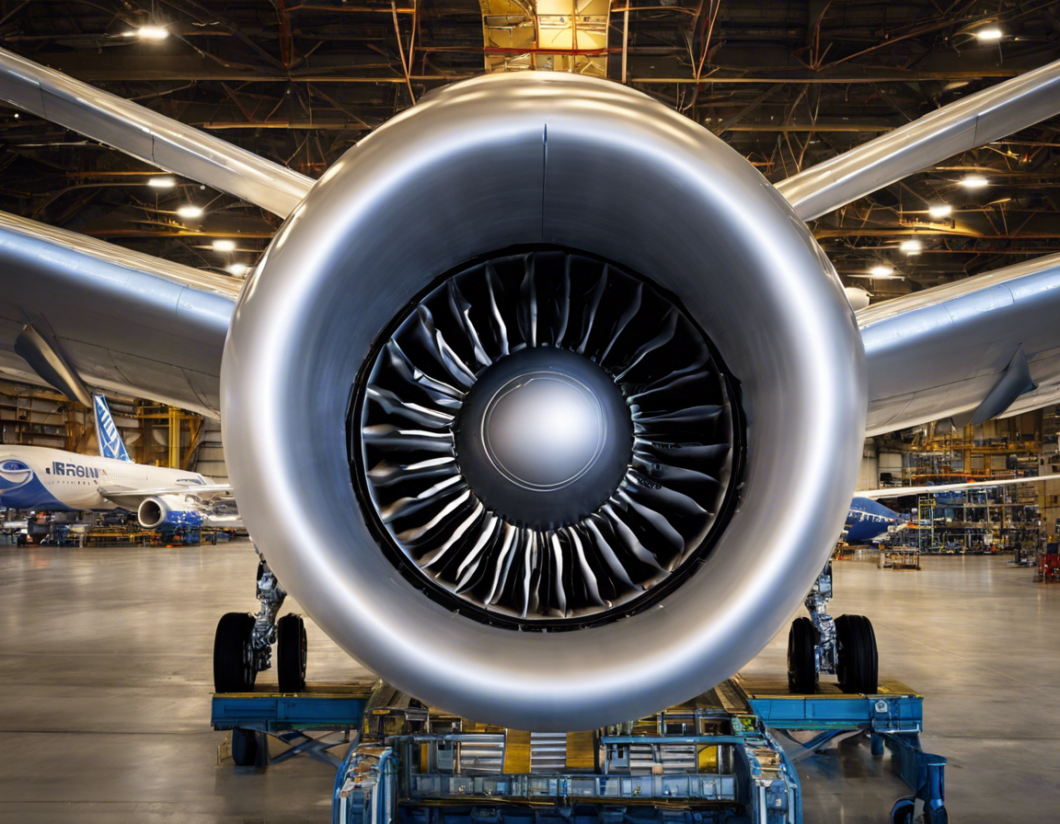As avid travelers and aviation enthusiasts, we often marvel at the sleek design of airplane exteriors and the power of their engines as they propel us through the sky. However, there is a crucial component of aircraft that often goes unnoticed but plays a significant role in ensuring the safety and efficiency of flights – Boeing plane engine covers.
What are Boeing Plane Engine Covers?
Boeing plane engine covers, also known as nacelles, are aerodynamic structures that encase and protect the engines mounted on the wings or fuselage of an aircraft. These covers serve multiple purposes, including reducing drag, controlling airflow around the engine, minimizing noise, and providing structural support.
The Importance of Boeing Plane Engine Covers
-
Drag Reduction: One of the primary functions of engine covers is to reduce drag, which is the force that opposes the forward motion of an aircraft. By streamlining the airflow around the engines, nacelles help improve fuel efficiency and enhance the overall performance of the aircraft.
-
Aerodynamic Efficiency: Engine covers are meticulously designed to optimize the aerodynamics of the aircraft. They are shaped to minimize turbulence and ensure smooth airflow over the engine, contributing to better lift and stability during flight.
-
Noise Reduction: Jet engines can generate significant noise during operation. Engine covers are equipped with sound-absorbing materials and special designs to dampen the noise produced by the engines, making the flying experience quieter for passengers and reducing noise pollution in surrounding areas.
-
Thermal Insulation: Aircraft engines operate at high temperatures, and engine covers play a crucial role in providing thermal insulation to protect the aircraft structure from heat damage. They help dissipate heat away from the engine and prevent it from affecting other components of the aircraft.
-
Structural Support: Engine covers are not just protective shells; they also provide structural support to the engines. They are built to withstand aerodynamic forces, vibrations, and impacts that the aircraft may encounter during flight or landing, ensuring the integrity and safety of the engines.
Types of Boeing Plane Engine Covers
Boeing aircraft utilize various types of engine covers based on the engine’s location and design. The most common types include:
-
Pyramidal Nacelles: These nacelles are streamlined and tapered, resembling a pyramid shape. They are often used on wing-mounted engines to improve aerodynamic efficiency.
-
Cylindrical Nacelles: Cylindrical nacelles have a more traditional shape and are commonly seen on fuselage-mounted engines. They provide ample space for the engine components while offering good aerodynamic performance.
-
Mixed Flow Nacelles: These nacelles combine elements of both pyramidal and cylindrical designs to optimize airflow around the engine. They are versatile and can be adapted to different engine configurations.
Maintenance and Inspection of Boeing Plane Engine Covers
Proper maintenance and regular inspection of Boeing plane engine covers are essential to ensure the continued airworthiness of an aircraft. Maintenance tasks may include:
- Regular cleaning to remove dirt, debris, and contaminants that can degrade the aerodynamic performance of the covers.
- Inspection for signs of wear, corrosion, or damage that could compromise the structural integrity of the nacelles.
- Checking the integrity of fasteners, seals, and access panels to prevent any issues that may lead to engine malfunctions.
- Conducting non-destructive testing, such as ultrasonic inspections, to detect hidden defects or cracks in the nacelle structure.
Frequently Asked Questions (FAQs)
- Can engine covers be replaced if damaged?
-
Yes, damaged engine covers can be replaced to ensure the safety and performance of the aircraft. Replacement typically involves skilled maintenance personnel and adherence to manufacturer guidelines.
-
How often should engine covers be inspected?
-
Engine covers should be inspected regularly as part of routine aircraft maintenance procedures. The frequency of inspections may vary based on the aircraft’s operating conditions and flight hours.
-
Do engine covers impact fuel efficiency?
-
Yes, engine covers play a crucial role in improving fuel efficiency by reducing drag and optimizing aerodynamics. Well-maintained nacelles can contribute to cost savings for airlines.
-
Are engine covers fire-resistant?
-
Engine covers are designed to withstand high temperatures but may not be completely fire-resistant. Additional fire protection measures are often integrated into the aircraft design to mitigate the risks of engine fires.
-
How do engine covers contribute to engine performance?
- Engine covers help optimize airflow around the engine, reducing drag and enhancing overall aerodynamic efficiency. This, in turn, can improve engine performance and fuel consumption.
In conclusion, Boeing plane engine covers are not just protective casings but sophisticated components that play a vital role in the safe and efficient operation of aircraft. Their design, maintenance, and functionality are crucial to ensuring smooth flights and reducing the environmental impact of air travel. Airlines and aviation authorities prioritize the integrity of engine covers to uphold the highest standards of safety and performance in the skies.
